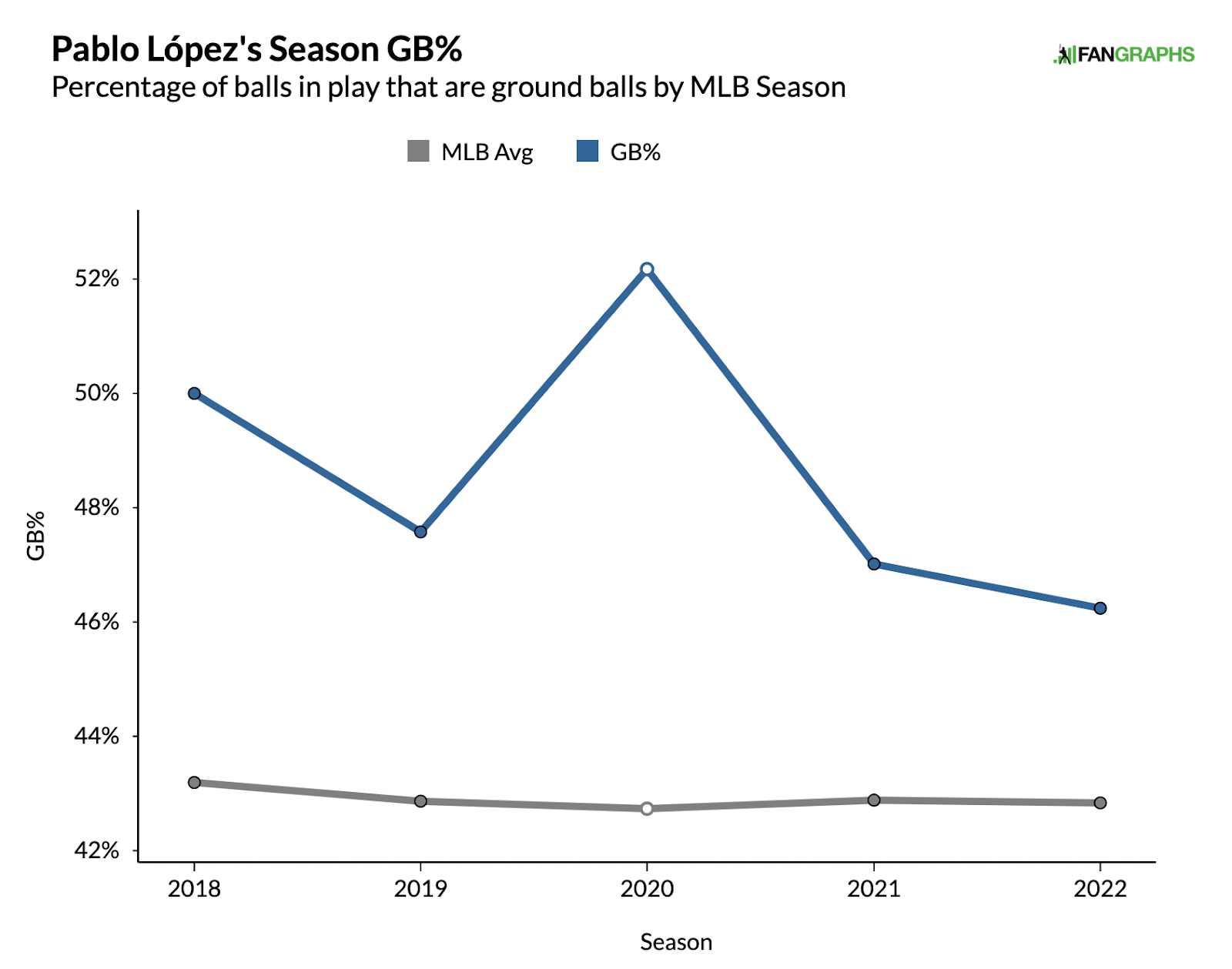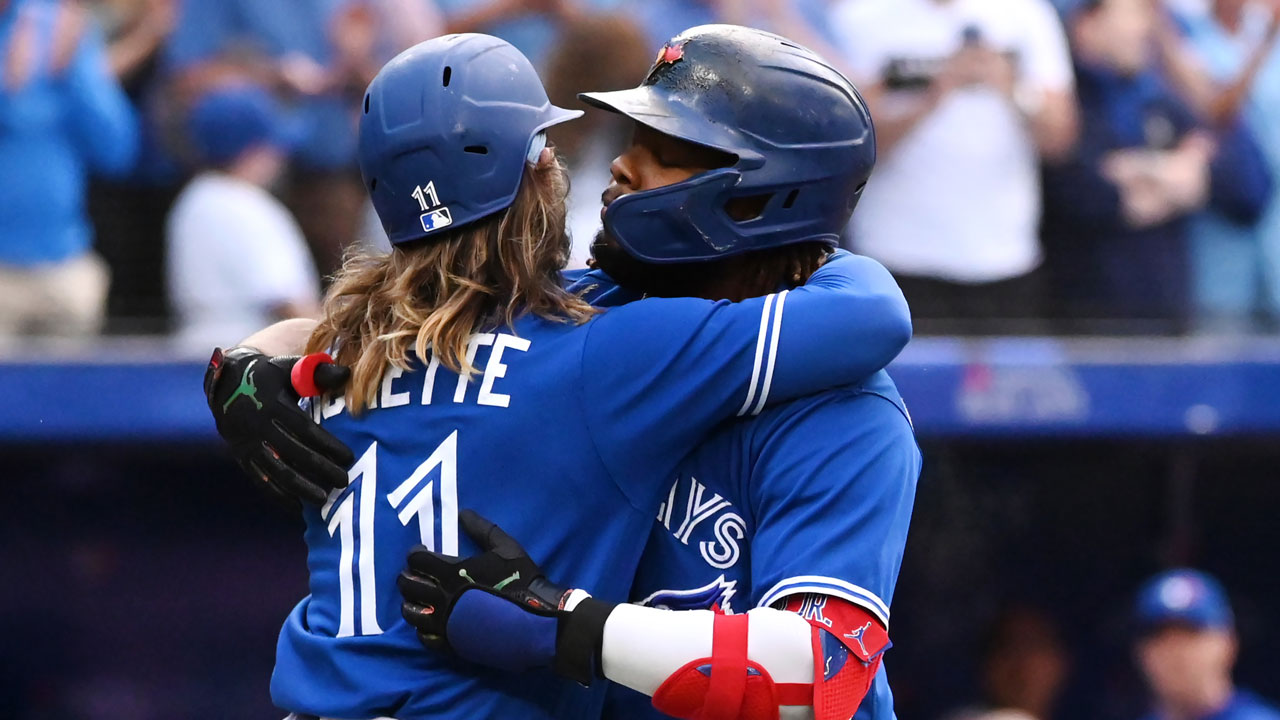One of the Toronto Blue Jays' greatest strengths is the sense of continuity that comes with a young position player core that is in no danger of aging out of their prime or leaving town in the immediate future.
George Springer is a bit of an exception. But, for the most part, the Blue Jays' building blocks like Vladimir Guerrero Jr., Bo Bichette, Alejandro Kirk, Teoscar Hernandez, Lourdes Gurriel Jr. and even Cavan Biggio have been with the team for a while, and are likely to remain with it until at least 2024.
That means the Blue Jays entered 2022 (and will enter 2023) knowing that power — and run scoring in general — is a strength they can build around, and their lineup won’t need many significant additions. Having that locked-in core, especially with its modest price tag, is an incredible luxury for the team.
The flip side of that coin is that Toronto has a few baked-in weaknesses. For example, one of the club’s most highly-publicized issues is a lack of left-handed hitting.
Another less-discussed issue that’s been hounding the Blue Jays is their outfield defence. While Springer can hold his own in centre, an outfield that regularly plays Hernandez and Gurriel Jr. in the corners is going to cost its pitchers some runs.
The former has improved since his first couple of years as a Blue Jay, but remains below-average. The latter’s fielding, outside of some highlight-reel throws, has consistently underwhelmed — with the home run he gifted to the Mariners on Thursday serving as a dramatic example.
Season | OF UZR | MLB Rank | OF DRS | MLB Rank | OF OAA | MLB Rank |
2019 | -11.6 | 22nd | -17 | 23rd | -5 | 21st |
2020 | -6.9 | 25th | -20 | 28th | -10 | 30th |
2021 | +11 | 10th | +3.4 | 10th | -9 | 25th |
2022 | -12.9 | 29th | -5 | 21st | -3 | 20th |
This isn’t a problem that’s going to be solved by the players on the roster, especially since the only guy on the bench who’s a reliable defensive upgrade (Bradley Zimmer) simply does not hit well enough to warrant more playing time. The team also won’t replace either Hernandez or Gurriel Jr. thanks to their offensive contributions. So, this deficiency is best understood as something the Blue Jays need to acknowledge and mitigate in the future acquisitions.
Toronto is almost certain to make multiple additions to its pitching staff around the deadline. Given the prohibitive prospect cost of those acquisitions, they’ll need to consider which pitchers they can get the most out of.
Right now, flyball pitchers are unlikely to fall into the bucket. Not only are the Blue Jays weak defensively in the outfield, they are strong on the infield with Santiago Espinal playing everyday, Matt Chapman in the building, and Guerrero Jr. improving at a position that’s still relatively new to him.
For example, the Blue Jays have been linked to Miami Marlins starter Pablo López in recent days. Considering the right-hander has a 2.99 ERA in 201.2 IP since the beginning of the 2021 and comes with two years of control past 2022 it’s safe to say it’ll take a significant haul to acquire him.
If the Blue Jays are going to pay a loftier price than any other suitor — of which there will be many — they need to be awfully confident in a near-ideal fit. In this case, that confidence would be warranted thanks to López’s consistently above-average groundball rates.
Alternatively, making a play for Chad Kuhl — who’s managing to post a 4.02 ERA and 1.03 HR/9 despite playing half his games in Coors Field — carries more risk for the Blue Jays than some other teams because his groundball rate ranks 116th out of the 136 pitchers who’ve throw 50-plus innings this year.
On the relief side of the equation, pitchers are often even more extreme in their batted ball tendencies. For instance, Kansas City Royals’ fireballer Josh Staumont averages 96.6 m.p.h. on fastball, carries a 11.08 K/9 and has a solid 3.81 ERA with a better 3.22 FIP. That makes him sound like an ideal Blue Jays trade target, but his groundball percentage is a paltry 22.2. While that may not be enough to take him off Toronto’s board, it could knock him down enough that another team is willing to offer more.
If you’re a Blue Jays fan and you hear the team has acquired a pitcher for the stretch run, go out and check their batted ball numbers, and how hitters put the ball in play against them. Whether it’s a deciding factor or not, it’s a piece of the puzzle Toronto’s front office is sure to have considered.


